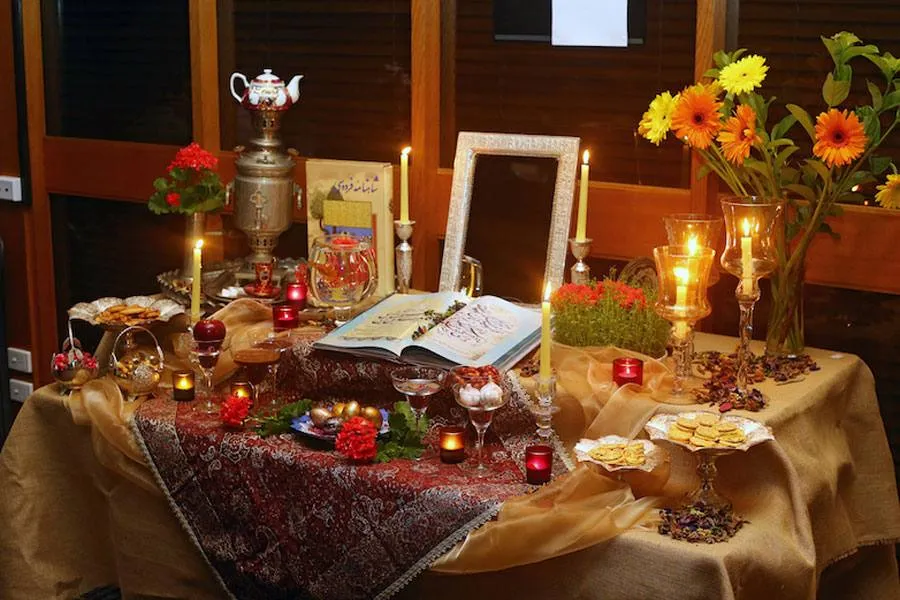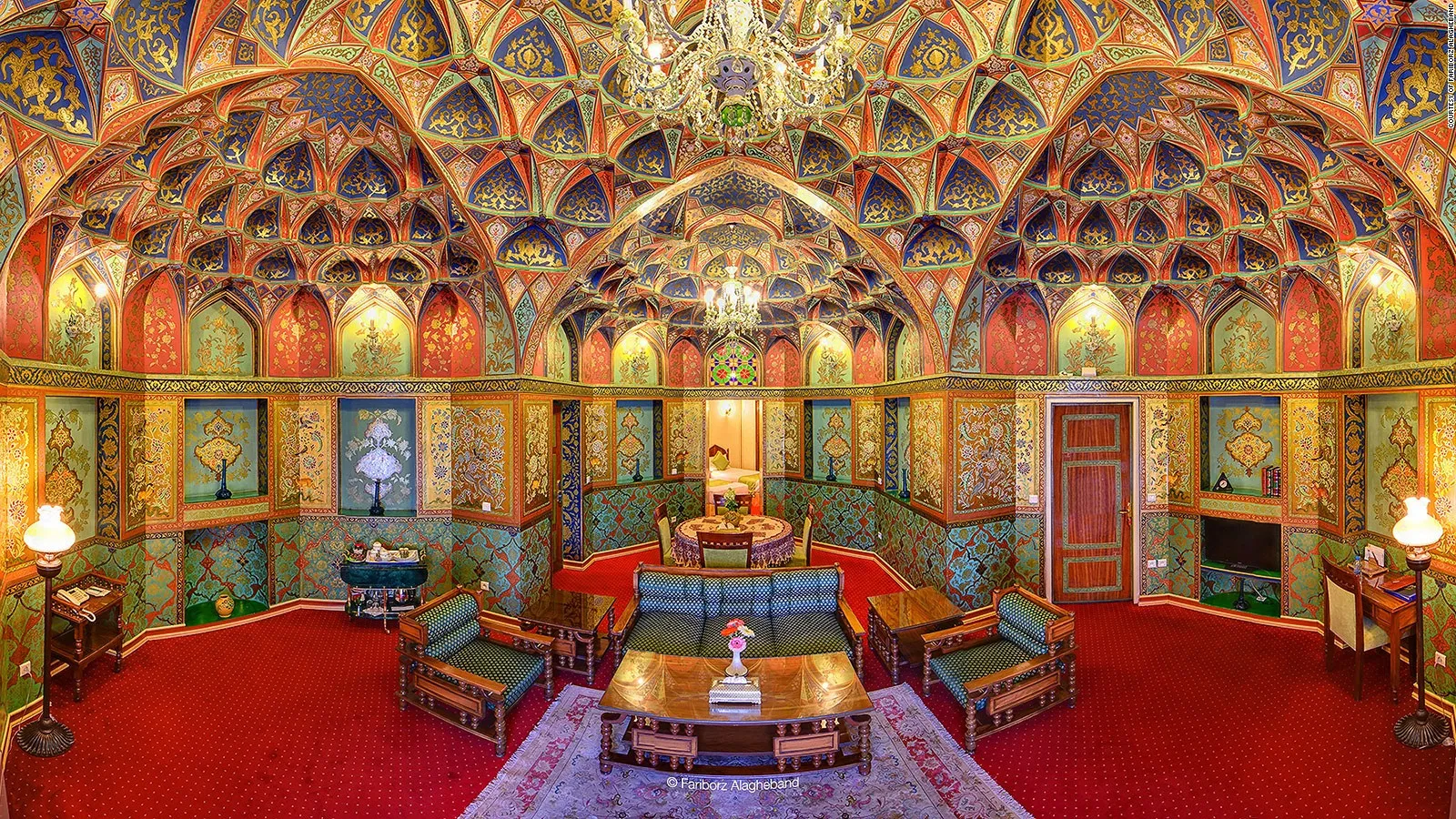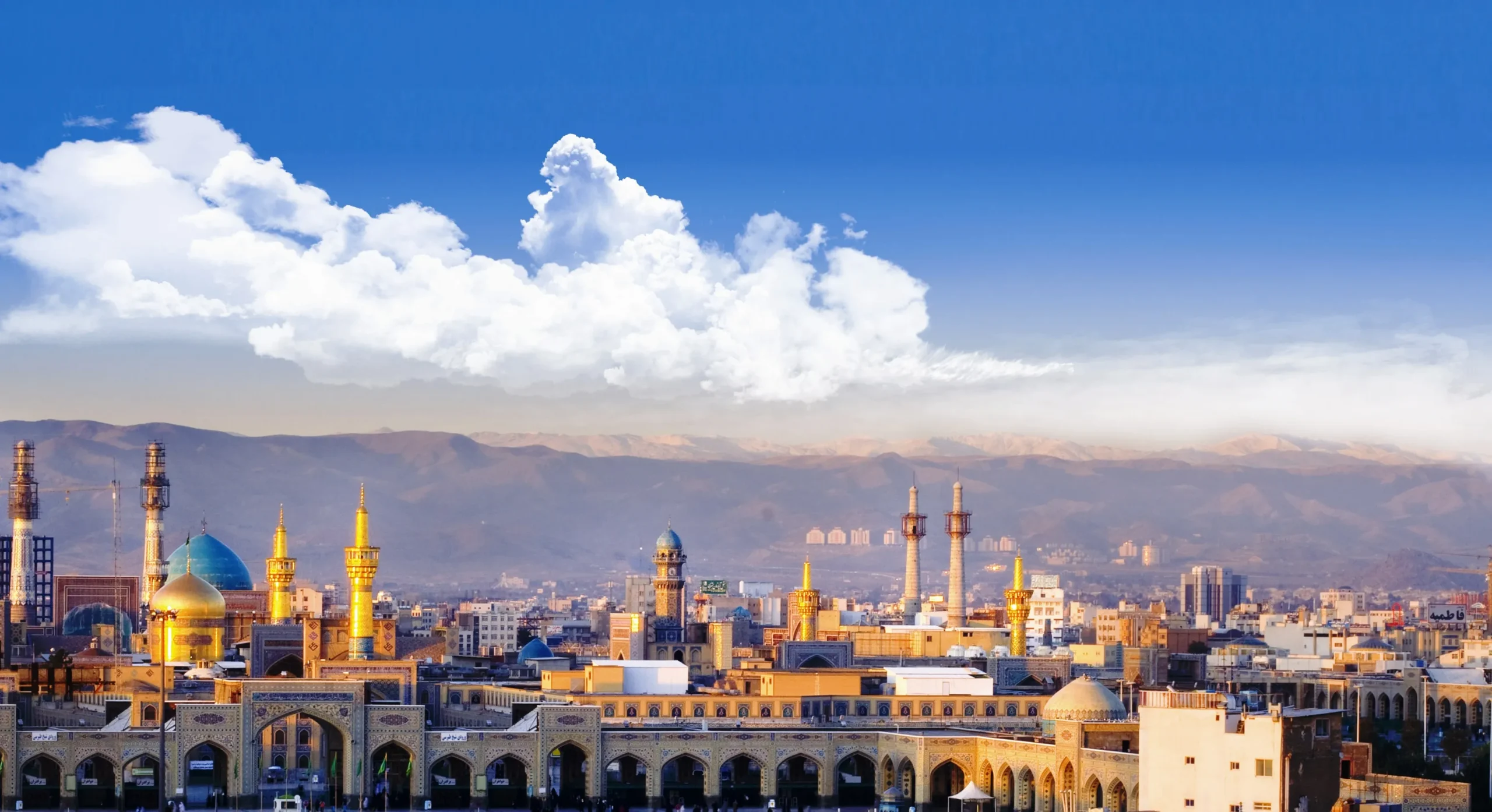On the day of the twenty-first of March at exactly the same moment all around the world, Nowruz happens. However, Nowruz is not just a moment, as it is not just a celebration. Nowruz stands high in the culture, belief and mindset of millions of people mostly living in the Iranian Plateau for thousands of years. It is nowadays celebrated worldwide and by many people with different ethnicities.
Nowruz is a single tradition that has survived wars, invasions, changes of governments and religions, and above all time. The customs and traditions may vary in different countries, but the main parts and what it stands for and what it means remains the same.
The March equinox, or better to say Nowruz that means the new day in word for word translation, is a traditional celebration promising hope and a better future to millions of people for centuries. Just as old as Nowruz is, its survival is tied to legends, myths and history; and in the land of poetry and storytelling, this too has a lot of stories to tell.
Nowruz; the Origins
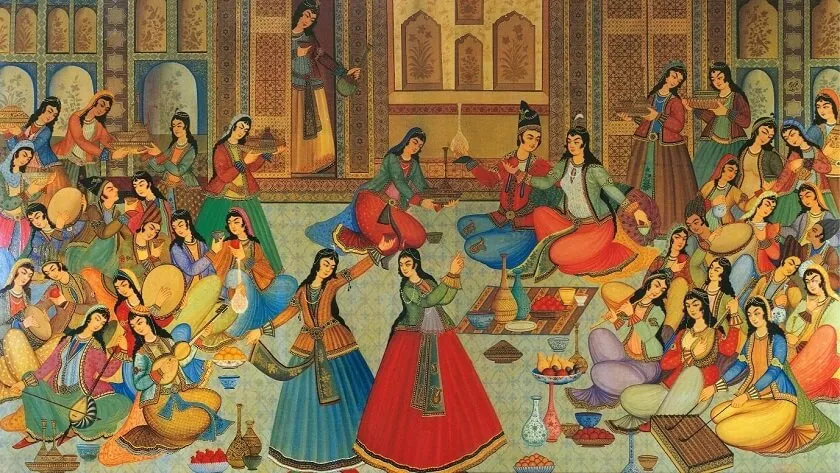
To record a single day or one significant event to mark the beginning of Nowruz is almost impossible. As Nowruz has been present in the life of people for what feels like forever. Some believe its origins to be around three thousand years ago and spring at the time of the March equinox.
Although there are people who believe the prophet Zoroastria to be the inventor of this celebration alongside many others such as Sadeh and Mehregan; the mostly accepted legend regarding the origins of Nowruz which is also recorded in Shahnameh by the great Iranian epic poet Ferdowsi, is the story of the Iranian mythical king Jam, later to be famous by the name of Jamshid, a name he got from this moment in his life, the invention of Nowruz.
The story tells us about King Jam passing through Azarabadegan, nowadays Iranian Azerbaijan and in the south of the city of Urmia he decided to stay the cold night. On the morning of the 21st of March he woke up and set forth to sit on his throne, Takht-e-Jamshid, which gave its name later to the palaces of Parseh known to the world as Persepolis. While he put his crown on and sat on his throne, the sun rose and shone and its reflection on Jam’s crown lighted and warmed up the world, people came out to the bright sun and the warmer weather and started dancing and happily congratulating each other for a new beginning and welcomed spring. From that unknown time on this day has been celebrated as Nowruz, the new day.

There are also people who believe the great Iranian king, Cyrus to be the one who introduced Nowruz to Iranians and encouraged them to celebrate the renewal of nature. Thus the date of Nowruz’s origin according to them is 538 B.C. Cyrus believed that Iranians should clean up their houses as well as the public places, wear clean and new clothes and meet their loved ones in order to celebrate together. There is a golden coin believed to belong to the time of Darius, the first on which an Iranian soldier with his archery is engraved with the date of 416 B.C. , the scholars believed the reason for its coinage to be the celebration of Nowruz on that year.
Want to learn more about the Iranian Culture and its beautiful quirks? Dig Deep into the Enriched Culture of Iran. Check out all of our In-depth Cultural Tours.
Nowruz Traditions and Customs; Welcoming a New Beginning
Among many countries that celebrate Nowruz alongside Iran, we can name Azerbaijan, Turkmenistan, Afghanistan, Pakistan, India, Bangladesh, Bhutan, Nepal, Tibet, Tatarstan, China, Uzbekistan, Turkey, Iraq and Sudan. Some of the formalities and customs may differ in these countries but the initial ones are the same and what Nowruz means to all of them is a shared mindset of new beginnings, opportunities and hope. In this blog I am going to write about the customs as they are held in the heart and the home of Nowruz, Iran.
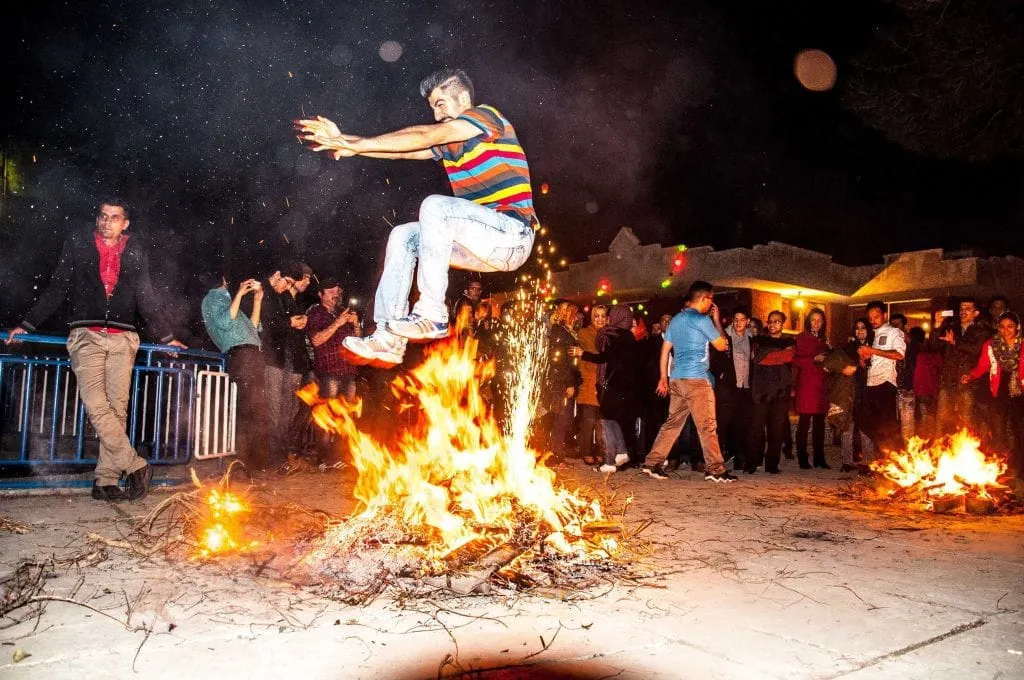
Nowruz celebrations start with Charshanbeh Soori, the celebration of fire and light on the last Wednesday of the year according to the Persian calendar. The core beliefs of Charshanbeh Soori would reflect the core standards of Nowruz. In Charshanbeh Soori alongside celebrating the end of the cold winter, people start the process of the cleaning of their houses known as Khaneh-Tekani by breaking the old jugs and replacing them with new ones, also with setting fire to wooden stuff they had been using during the winter coldness and presume they would have germs and bacterias.
Khaneh-Tekani means to shake the house if we are going to translate it word for word. Indeed, it is shaking the homes. Iranians clean their houses from bottom to the top, inch by inch. It is because of the way people used to live in the olden days. Without today’s technologies people had limited ways of keeping their houses warm like using charcoal or burning wood in the chimneys and trying to keep the curtains drawn to prevent the cold weather from coming in. so they needed to clean all that up at the time of Nowruz, both because the weather would go warmer and warmer and because of their belief in the renewal of things alongside nature with the coming of spring. It was waking up from a sleepy cold winter and starting blossoming a new life with nature.

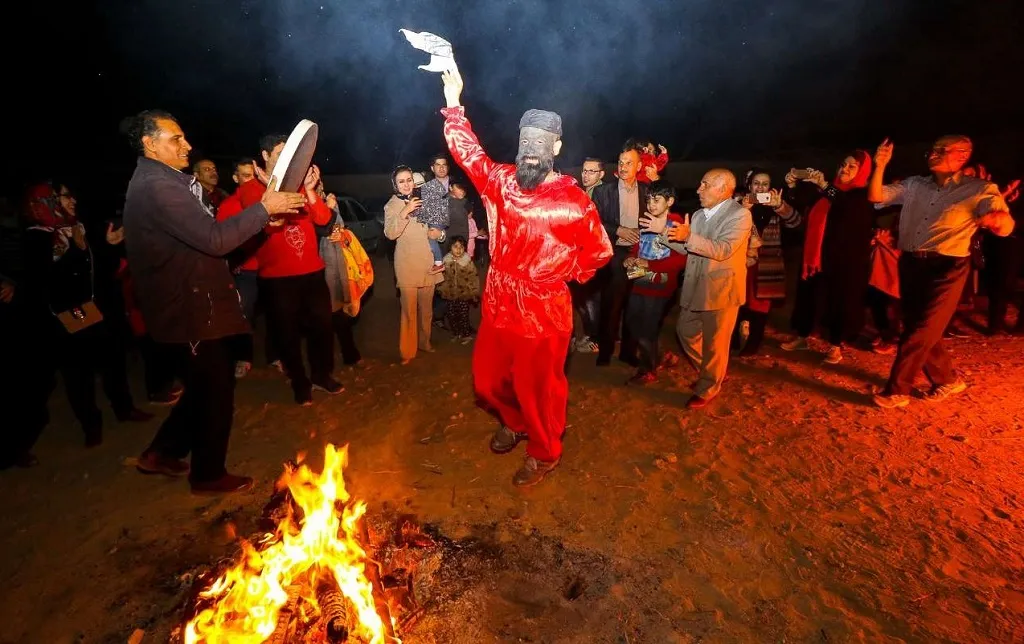
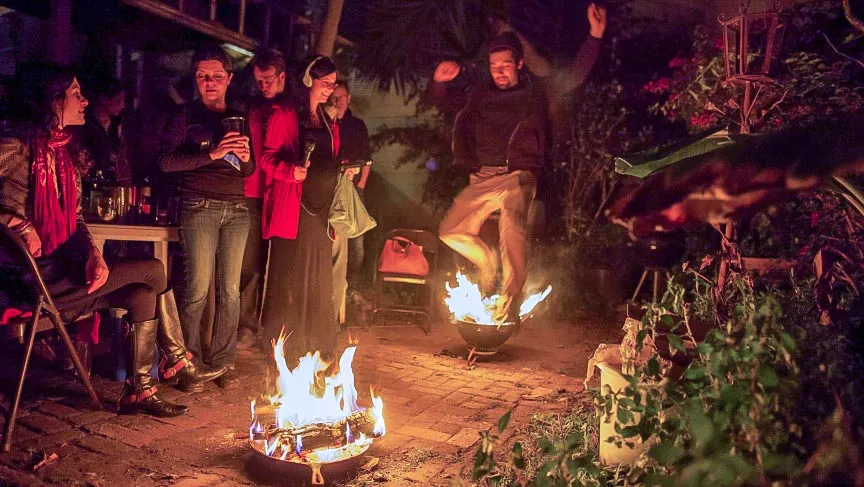
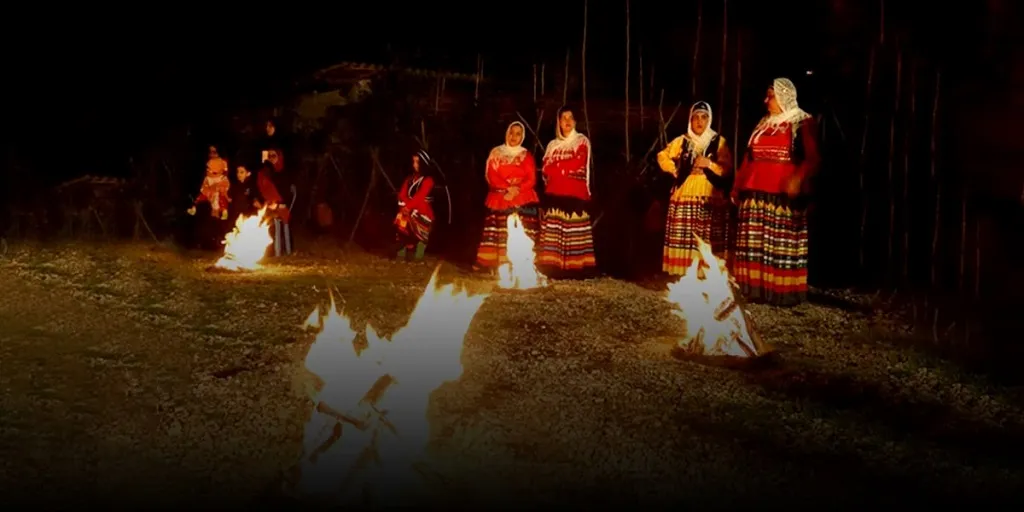
Another custom held widely before Nowruz happens on the last Thursday of the year in which Iranians visit the graves of their gone loved ones and bring flowers and seeds for the birds who have immigrated for the warmer weather. At the time of Nowruz everywhere is filled with flowers to welcome the renewal of nature and the beauty of spring.
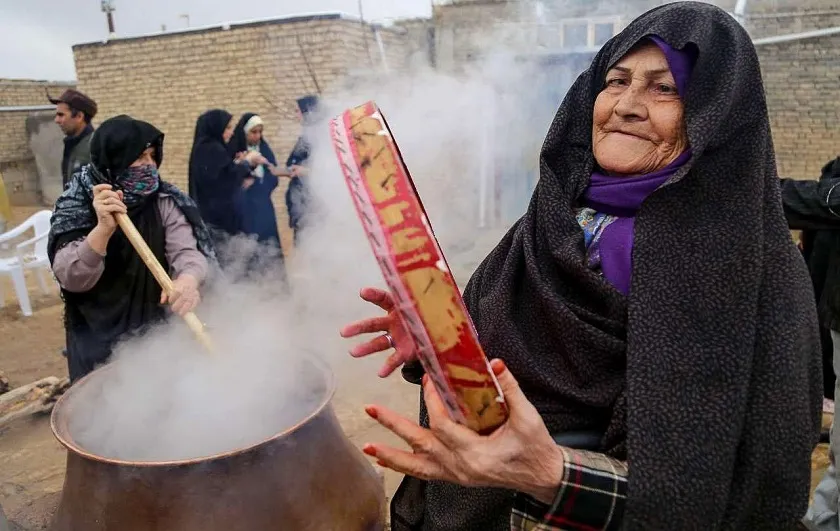
One of the significances of Nowruz is its special table with meaningful components. Two of these components are prepared before Nowruz, which are Sabzeh and Samanoo. For Sabzeh people start almost a month before Nowruz. They put the seeds of wheat or barley in a special type of plate with a specific amount of water and a clean cloth. They take care of it daily to help it grow into a beautiful green plate of wheat grass which they put on their Nowruz special table as a sign of flourishing prosperity. Samanoo is also made of wheat. Putting specific amounts of wheat in a big bowl and adding special ingredients, usually women stay awake a whole night preparing Samanoo. They usually sing songs regarding spring and renewal. Samanoo is both eaten and put at the special Nowruz table.
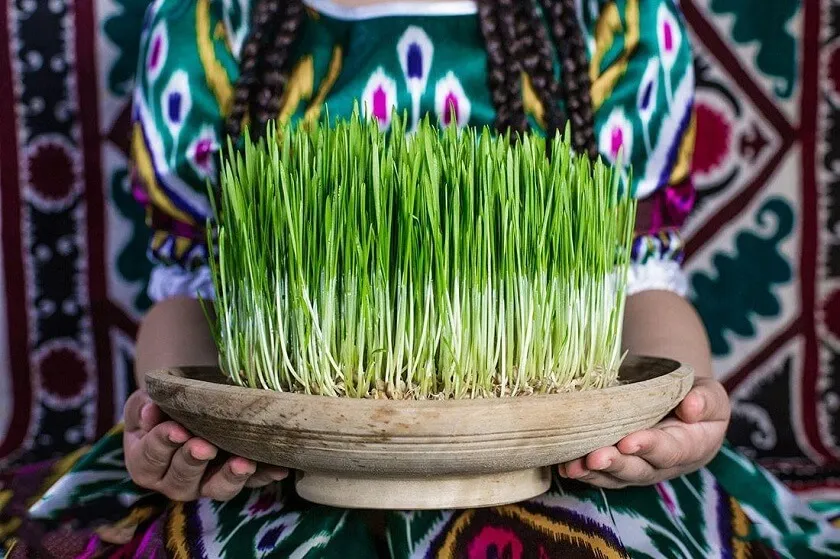
The last Nowruz tradition held before Nowruz is setting up the special table. In different countries in which Nowruz is celebrated the components of this table differ. In Iran it is called Haft-Sin, as the seven components start with the consonant S in the Persian language; they are Sabzeh (the plate of green wheat grown previously by the family members or purchased from the market), Senjed (Sea- buckthorn),Samanoo (also made previously or purchased from bazaars), Sekkeh (coin), Sib (apple), Sir (garlic), Serkeh (vinegar). They all connote themes and meanings and stand for prosperity, health, wealth, growth or togetherness. Also, boiled eggs are painted and then added to the table as a decoration.
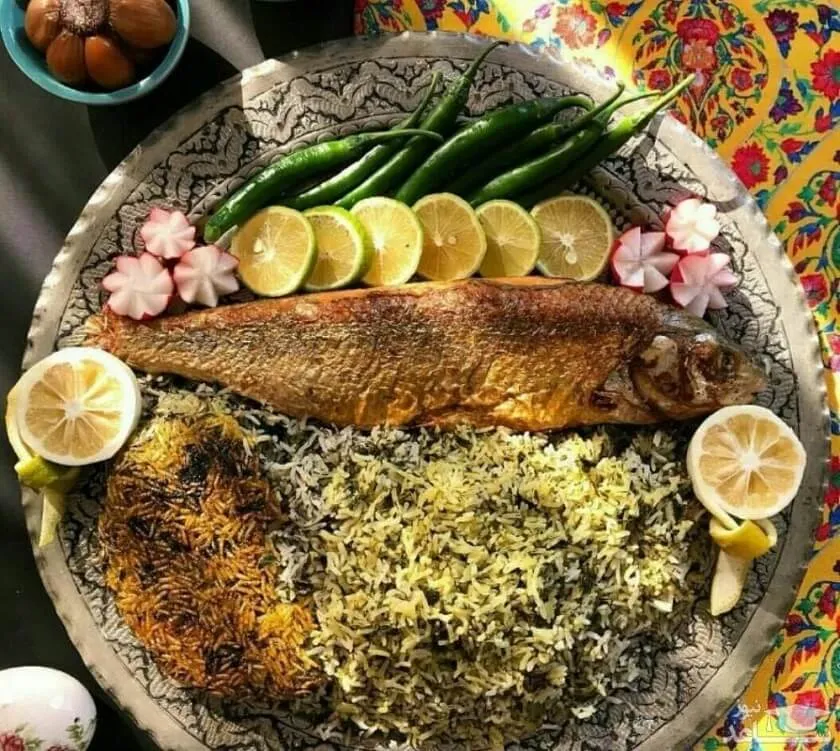
At the night of Nowruz or on its day, Iranians eat a special food, called Sabzi-Polo Mahi. It is rice with special green vegetables and fish.
The Special Moment of Nowruz; a New Year
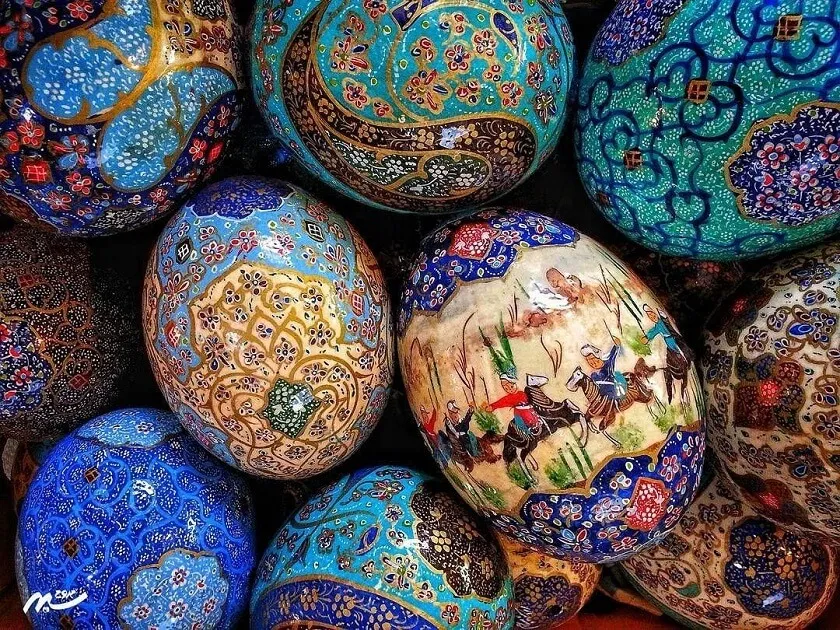
One of the most special and significant characteristics of Nowruz is that it happens at the same moment all around the world. At the exact second of the March equinox which is calculated carefully, people who celebrate Nowruz have already gathered around the Haft-Sin and celebrate together and welcome Nowruz, a new year. A poem by Hafez, the great Iranian poet who is known to be some kind of an oracle is read by Iranians. The elders of the families present the youngsters with money as a blessing for the upcoming year. This Nowruz tradition which is known as Eydi is really looked forward to and loved by children.
The celebration of Nowruz nowadays lasts for thirteen days. The first four days are national holidays in Iran. During these thirteen day periods Iranian visit each other’s houses and spend quality time together. On the moment of Nowruz and also during these family visits Iranians believe that people should not only clean their houses, but to wear new and clean clothes, eventually these Nowruz traditions all add up to the mindset of becoming new and clean and starting fresh.
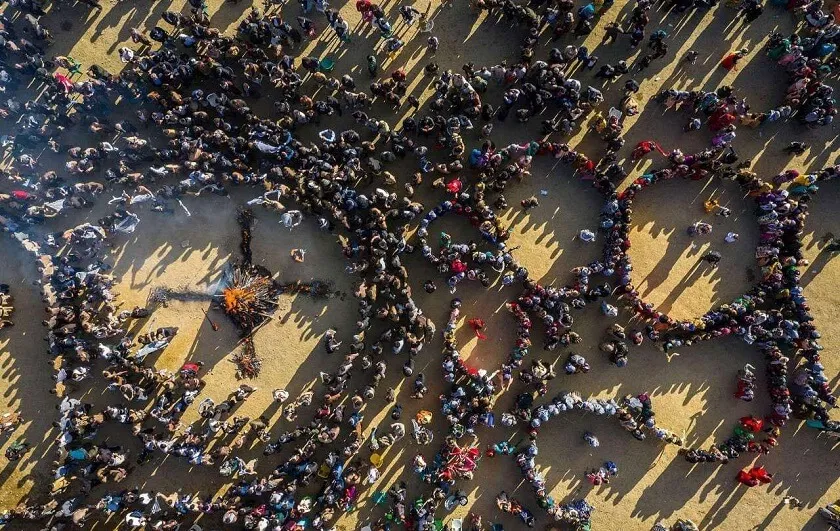
The Kurd people of Iran celebrate Nowruz a bit differently. While Kurdish women wear new colorful dresses, the young Kurdish boys carry yellow, red and green flags as they all set off outside their towns to welcome spring on its way back to their towns. They set a big fire and dance around it while singing together the beautiful Kurdish songs. Kurdish people of Iran believe Nowruz, the 21st of March to be the day the great Iranian hero Kaveh overcame the devil king Zahhak.
The story of the devil king Zahhak is yet another example of many stories of this land, a king who killed youngsters in order to feed the two serpents on his shoulders with their brains. Kaveh, a smith man who had already lost his sons because of this cruel king had enough of everything, he created a flag with his smith clothes and started a riot against Zahhak, and win the war against him and became the ultimate symbol for the victory of goodness and light over darkness and the cruelties of men. Isn’t it all what Nowruz is about? To end the cold and dark winter with the shortage of light and goods in nature and celebrate the arrival of warmth, light and the awakening of nature.
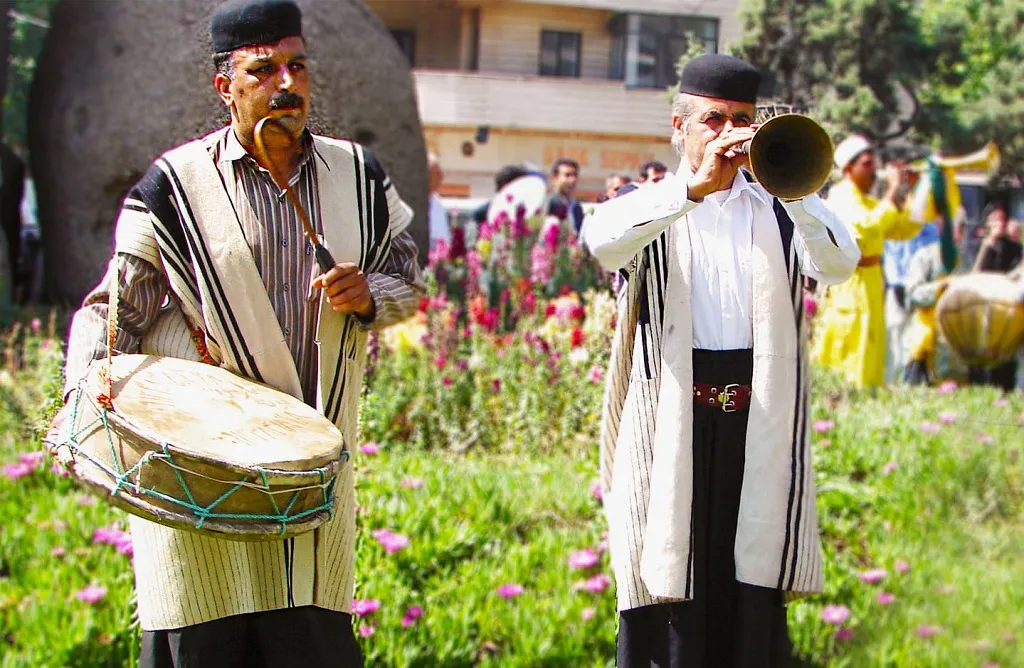
Another Nowruz tradition that was somehow forgotten but is revived in the past few years is Nowruz-Khani. Essentially it is a collection of songs regarding Nowruz, the New Year and the beginning of spring and a new life which used to be sung in the streets by musicians. Nowadays, it is done both by street musicians and also famous ones that record it on CDs and are very popular. One of the most popular ones is by Homayoun Shajarian and Sohrab Pournazeri by the name of Nowruz-Khani.
Amoo Nowruz and Haji Firouz are two legendary symbolic characters of Nowruz. Amoo Nowruz is an old and very wise man who has a companion, Haji Firouz. Haji Firouz is a young witty boy who corrects his master wittily and dances around to make people happy at the occasion of Nowruz. They advise people to be good to one another and to celebrate life while they tell people stories. Still people wear costumes as an old man and his young companion in red dress, play Nowruz music and dance around in streets to remind people of Nowruz, but deep down, to keep the old traditions alive and to remind people of the value of life.
Nowruz Traditions; Sizdeh Bedar, Valuing Nature Even More
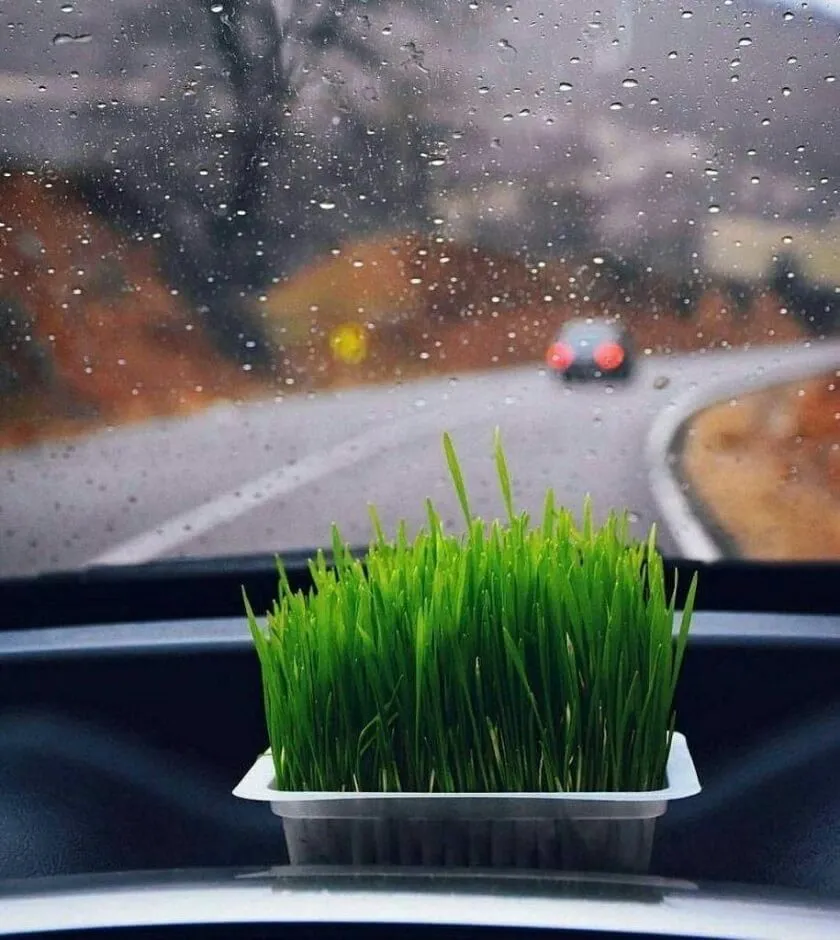
On the last day of Nowruz, the thirteenth day, Iranians hold the last formality of Nowruz which is called Sizdehbedar. It literally means to spend the thirteenth day out, and on this day which is also called the Nature Day in Iran, people go to plains and gardens, on top of the hills or by the rivers and have a nice picnic. They usually eat Ash-e-Reshteh which is a special Iranian soup with noodles and different beans.
There is also a legend behind this day. The story goes like this, the legendary and mythical king of Iran, Jamshid was told that a great flood is going to ruin the cities and it is better for the people to go outside the towns and on the top of hills on that day. Whether this story is true or not, people have gone out on the thirteenth day of spring for thousands of years, and it has turned to a quality time in which you can celebrate nature and enjoy the beauty of it. Another fun tradition on this day is tying the two strands of grass and making a wish for the upcoming year. Also, people bring their Sabzeh from their Haft-Sin that they have kept during these thirteen days at their houses, and throw it away, in floating water if possible. It adds to the myth of the King Jamshid, in this way they could have prevented the flood.
International Nowruz; a Day for World Peace
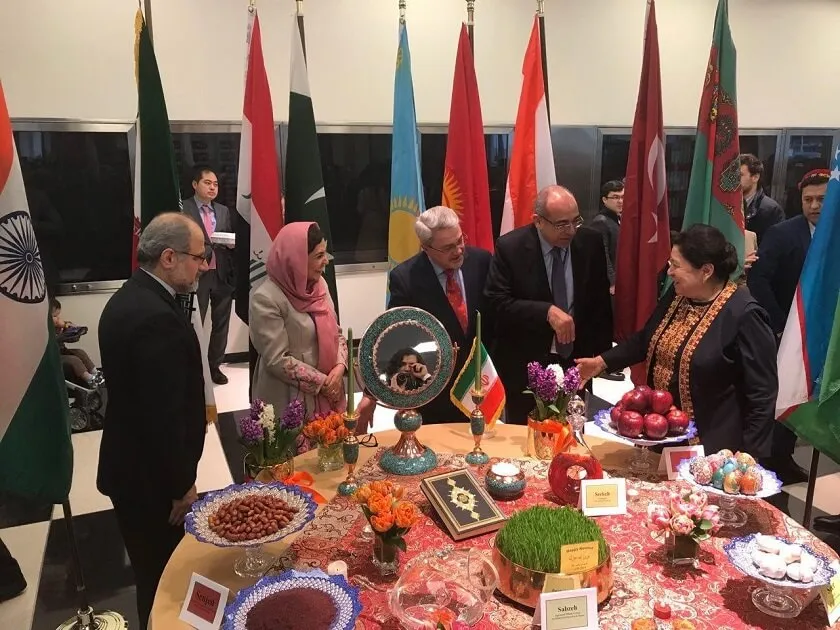
It was Azerbaijan and Uzbekistan who first requested Nowruz to be recognized by the United Nations and UNESCO as a worldly celebration and a heritage. But after investigations being done, the 21st of March was marked by the United Nations in its calendar as an Iranian celebration called Nowruz, a day for world peace. Iran shares this world heritage with the other countries of the Iranians Plateau who celebrate Nowruz, but Tehran is recognized as the home city for the international celebrations of Nowruz, although it has been decided by the congress of countries celebrating Nowruz that they would take turns as the host for this ancient celebration.
New Year by Khayyam
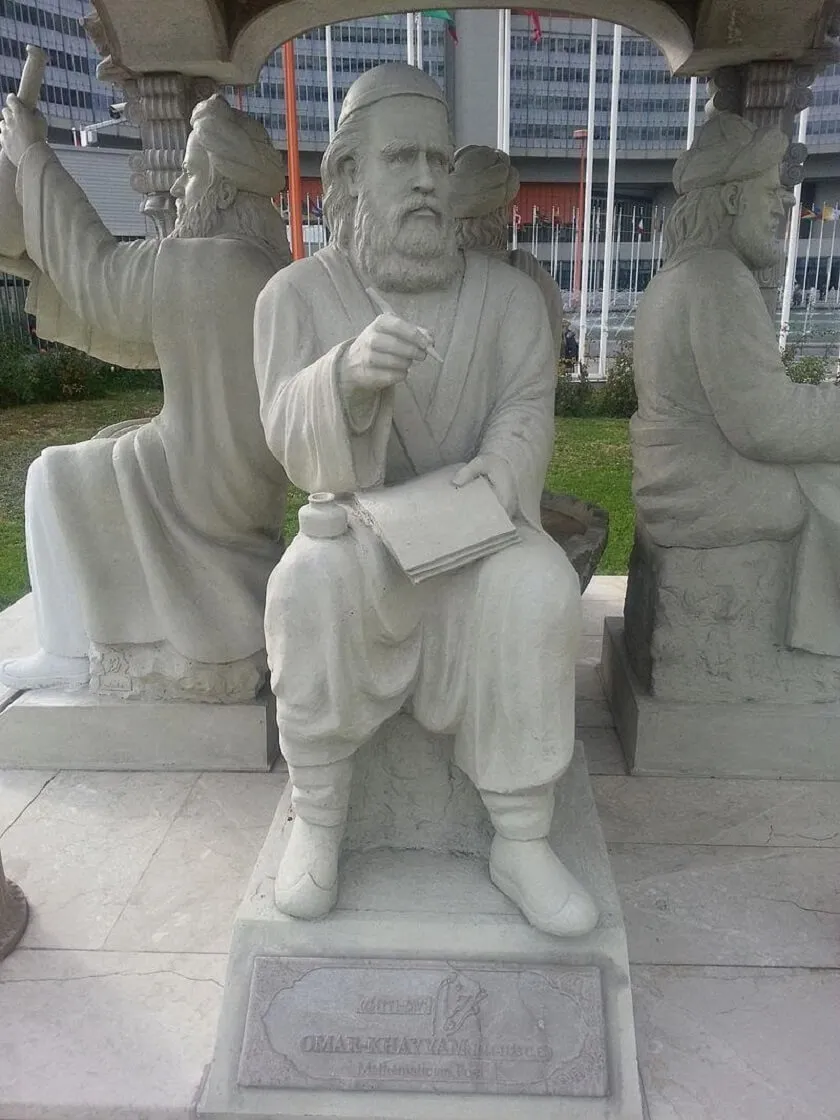
The great Iranian poet, astronomer and mathematician Ommar Khayyam is the one who designed the Persian calendar, or the solar calendar which is also known by the name of the king who asked Khayyam for this special calendar, Kharazmshahi. Ommar Khayyam knowing the importance of Nowruz for Iranians, and its specific, meaningful and beautiful moment being the March equinox, put the first day of the first month of the year on its exact day. His calculations were very accurate and to the point, every four year a day would be added to the three hundred and sixty five days and the moment of the March equinox would be always accurate to be the first day of spring, the first of Farvardin, and the first month of the year.
Another interesting story is about the great king of Hindustan, Akbar Shah Gourkani, or the Great Akbar. He announced the solar calendar as the official calendar of his country and celebrated Nowruz as he believed it to be one of the most meaningful and beautiful events. The Nowruz tradition was followed by his son, Shah Jahan who built the magnificent Taj Mahal for his beloved wife who was an Iranian Safavid princess.
Nowruz; Not Just a Celebration, but a Symbol of Hope
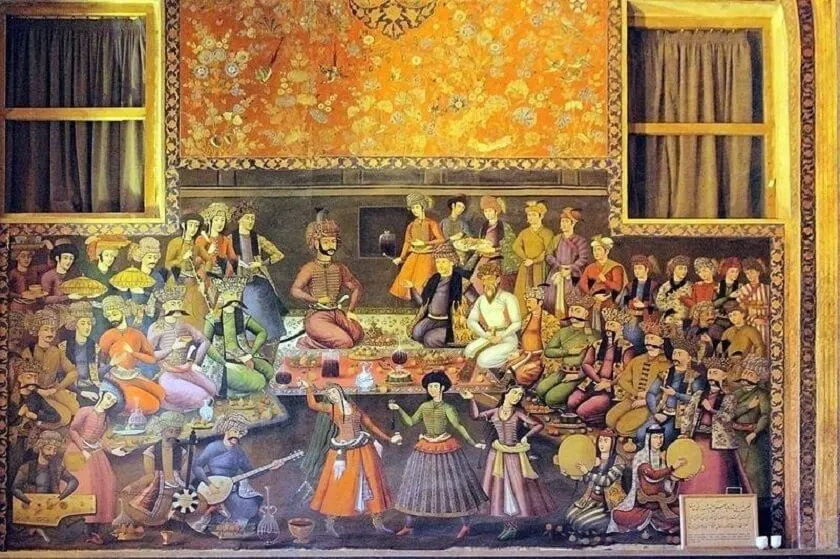
For more than three million people who celebrate Nowruz all around the world, it is not just a celebration. It is a chance of getting together, appreciate the company of people you love and have faith in a future you can build. Just like nature waking up from its cold winter slumber, blossoming into a new life, we can renew ourselves. Nowruz has told people for thousands of years that there is always hope to live better, there is always a chance to start over. And above all, by cherishing every moment, by glorifying each other’s company and spreading love, we human beings can become better versions of ourselves.
When Iranians want to congratulate the New Year to each other they say “Nowruz Mubarak!” which means happy Nowruz. And when you say this to someone, there is always a smile on the person’s face as if a light shines in their eyes and glitters on their lips. It is the light of hope, warmth, growth and prosperity that shone thousands of years ago when the sun poured its rays on the crown of the Iranian mythical king Jamshid in Urmia, and lighted up the whole world and sent a message still going strong, to the extent that the United Nations also acknowledges, let there be peace, let there be light and let there be happiness and love.
